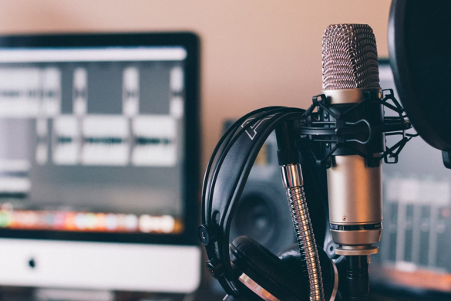Tips for Setting up a Home Recording Studio
aaamusic | On 17, Jan 2022
Recording in a professional recording studio is expensive. In addition, these days, technology has reached such a level that a computer, DAW, desire, and some skills are enough to create hits. Therefore, more and more beginners and famous musicians create world hits in their bedrooms. A prime example was Skrillex, who recorded a “home” album that earned him several Grammys. Billie Eilish and others can also be mentioned.
Alternatively, you can become a ghostwriter or sell music samples on specialized platforms. This is especially true during isolation. The money earned can be spent on playing at the online casino, which you can select at the https://www.source.bet/ platform. Therefore, in this review, we will show you how to build your own recording studio at home.

Equipment Selection
To start your career as a record producer, there is no need to make a large investment. Basically, you only need eight basic elements to get started. Already with such a device, you can easily produce radio-quality tracks, arrange, and record instruments.
When creating music, it is important to achieve the best sound quality, in addition to a computer, you also need:
- Computer. The capacity of even relatively modest devices is sufficient for recording without interference, tangible delay, and clipping. If you plan to work with large projects on many channels, then you need a computer with a powerful processor and at least 16 gigabytes of RAM;
- Pop filter. This is a must for studio vocal recording if you do not want extraneous sounds, extra plosive consonants, breathing sounds, and other noise to get into the recording. Pop filters are inexpensive, and the benefits are invaluable;
- DAW. There are many music production software out there nowadays like FL Studio, Pro Tools, Logic Pro X, Cubase, Ableton Live, Reason, etc.;
- Studio monitors. Monitors are obviously needed for music production and not just for home listening, so they are required to have as flat and neutral frequency response as possible. Therefore, different hi-fi speakers will not work since they color the sound;
- Headphones. You have to choose from closed and open headphones. Closed-back headphones are needed for recording monitoring. Open headphones are designed for studio mixing.

Selecting and Preparing a Room
When choosing a room, pay attention to five main points:
- The size. Avoid small rooms; the larger the room – the better;
- Configuration. The room should not be square – this will lead to standing waves and prevent normal monitors from working;
- Noise level. The room should be as quiet as possible because any background noise is bound to get into the microphones;
- Reflective surfaces. The studio space should not be entirely composed of rigid reflective surfaces; excessive reflections should be avoided. You should not sit down to record and mix an album in a room with a full-length mirror or panoramic window;
- Ceiling height. If the ceiling is too low, it will result in vertical reflections.
Create a comfortable setting, where you can easily create quality music and hear every single sound in the right way. The above tips will help you achieve this goal.

